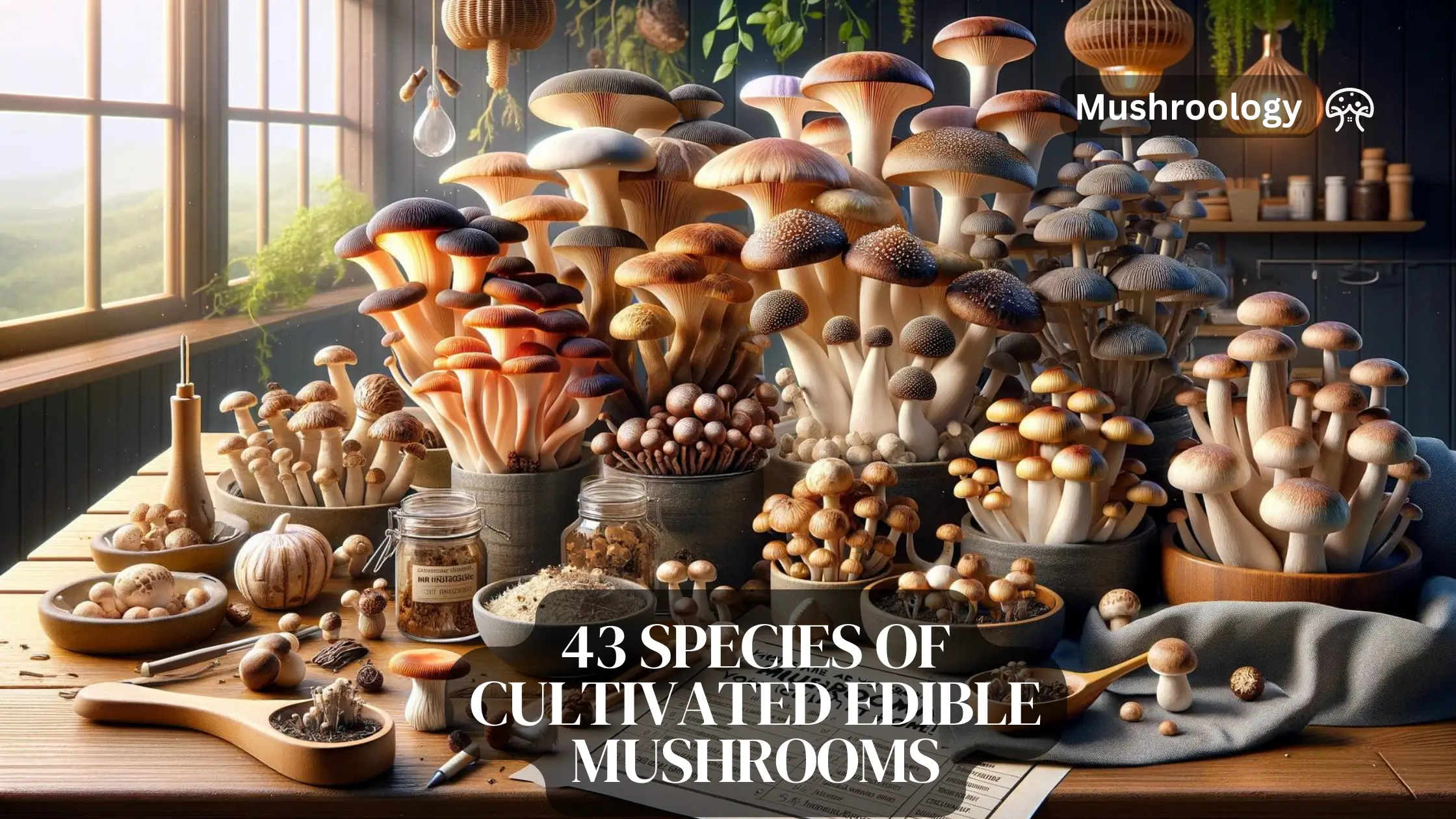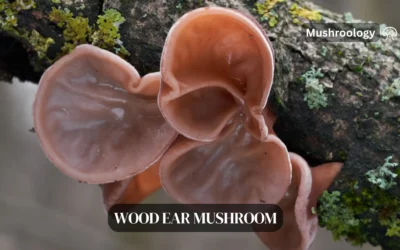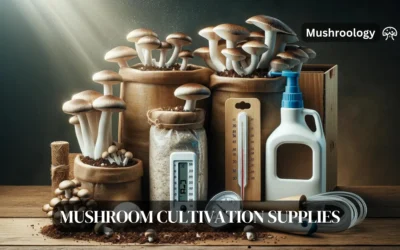Here are 43 mushroom varieties you can cultivate at home! From the Shiitake’s nutritional powerhouse to the Enoki’s delicate texture, this guide unlocks the secrets to growing your own gourmet fungi. Whether you’re looking to enhance your meals with rich, umami flavours or explore the medicinal benefits of these natural wonders, prepare to transform your culinary experience with the earthy delights of home-grown mushrooms.
1. Agaricus bisporus – the Button Mushroom

Agaricus bisporus, widely known as the Button Mushroom, is celebrated for its versatile culinary applications and nutritional value. It flourishes in controlled, cool, and humid conditions, making it a prime candidate for commercial and home cultivation. Recognized by its smooth, white cap that expands with maturity, it transitions from a compact button to a more open, flat cap as it ages.
- Requires cool, humid environments for optimal growth, mirroring its natural woodland habitats.
- Cultivated widely, it’s a fundamental ingredient in cuisines around the globe, offering a subtle, earthy flavour.
- It is rich in nutrients, including protein, vitamins B and D, minerals, and antioxidants, contributing to a healthy diet.
- Its growth from button to Portobello mushroom stages provides a range of textures and flavours for various dishes.
2. Agaricus bitorquis – the Pavement Mushroom
Agaricus bitorquis, often called the Pavement Mushroom, is distinguished by its robust nature and ability to thrive in urban environments, pushing through asphalt and along roadsides. This hardy species enjoys temperate climates and is found in habitats disturbed by human activity, showcasing its adaptability.
- Prefers temperate climates, often found in urban areas, parks, and garden paths, illustrating its versatility.
- It offers a slightly denser and firmer texture than its cousin, Agaricus bisporus, making it well-suited for various culinary uses.
- Features a creamy white to light brown cap and a flavour profile that is rich and earthy
- It is a good source of protein, vitamins, minerals, and dietary fiber, contributing to a balanced diet.
3. Agaricus subrufescens- the Almond Mushroom
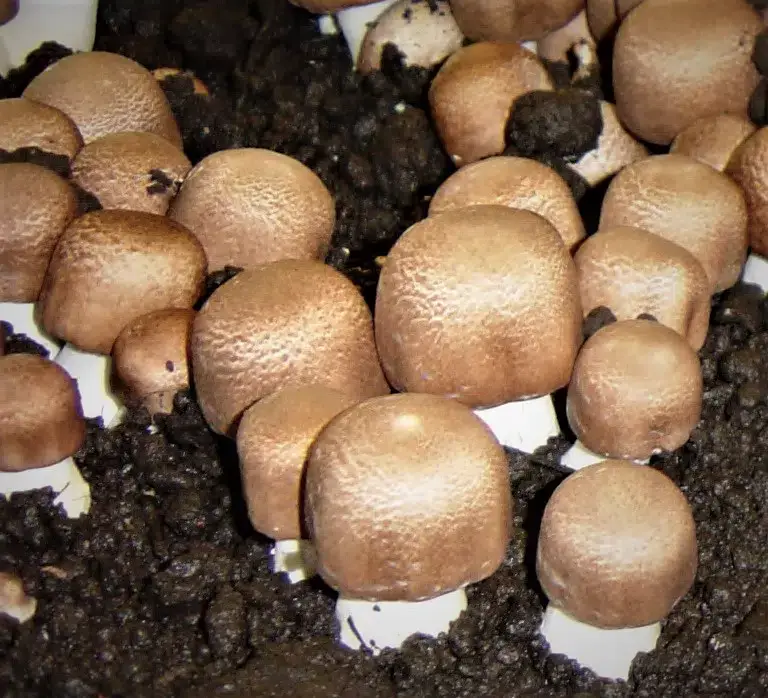
Agaricus subrufescens, commonly known as the Almond Mushroom or Brazilian Blazei, is celebrated for its medicinal properties and distinctly nutty flavour that resembles almonds. Originally discovered in Brazil, this mushroom thrives in warmer climates and requires a specific combination of humidity and temperature to flourish.
- It prefers warmer climates and specifically needs controlled humidity and temperature, mimicking its natural habitat in Brazilian rainforests.
- Recognized for its potential immune-boosting properties, Agaricus blazei is a subject of interest in the field of medicinal mushrooms.
- Contains high levels of beta-glucans, polysaccharides known for supporting immune system function.
- Often consumed in the form of supplements, extracts, or directly in culinary preparations, offering versatility in usage.
4. Agrocybe aegerita – the Black Poplar Mushroom or Velvet Pioppini
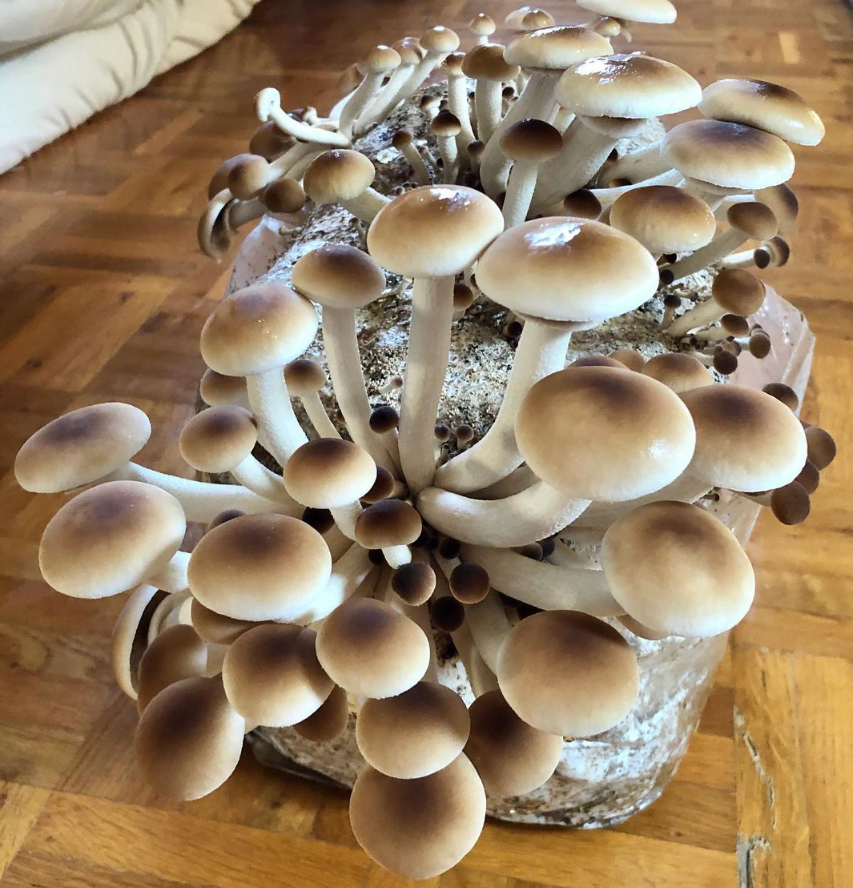
Agrocybe aegerita, known as the Black Poplar Mushroom or Velvet Pioppini, is prized for its robust, earthy flavour and firm texture, making it a favourite in gourmet cooking. This species typically grows in association with the roots of hardwood trees, especially poplars, thriving in temperate climates across Europe, Asia, and North America.
- Exhibits a preference for growing in clusters on the wood of living or dead hardwood trees, particularly poplars and willows.
- Enjoys temperate climates, flourishing in the spring and early summer months, showcasing its adaptability to seasonal changes.
- It offers a distinctive, meaty texture and a rich, nutty flavour, which enhances various dishes, from stir-fries to risottos.
- Cultivation mimics its natural woodland habitat, requiring substrates rich in hardwood content to achieve optimal growth.
5. Agrocybe chaxinggu – the Tea Tree Mushroom
Agrocybe chaxinggu, also known as the Tea Tree Mushroom, is a delicacy in Asian cuisine, renowned for its firm texture and subtle, slightly sweet flavor. This mushroom naturally grows on the wood of broadleaf trees, including species within tea plantations, hence its name. It thrives in warm, moist climates typical of East Asia, where it is most commonly found and cultivated.
- They are cultivated primarily on the decaying wood of broadleaf trees, often within the ecosystems of tea plantations, which contributes to their unique flavour profile.
- Prefers warm, humid environments, aligning with its native and most prolific habitats in East Asia.
- Nutritionally rich, providing a source of protein, dietary fiber, and various vitamins and minerals, enhancing its appeal as a healthful food choice.
- Appreciated in various culinary traditions for its ability to absorb flavors while contributing its own delicate taste, making it a popular choice for soups, stir-fries, and traditional dishes.
6. Auricularia auricula – the Wood Ear Mushroom or Judas’s Ear
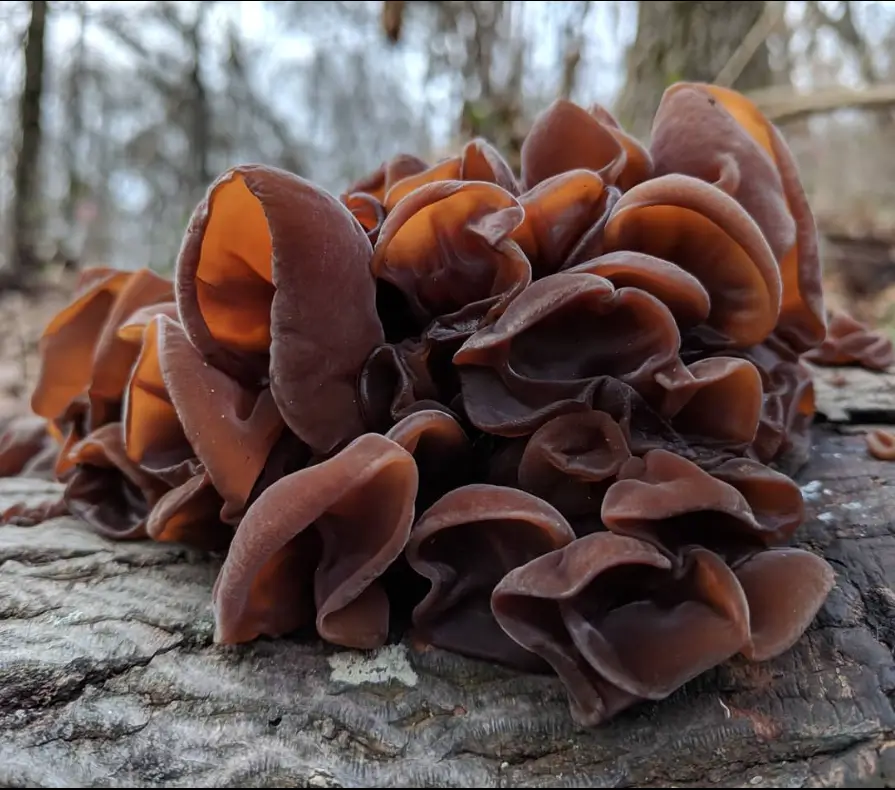
Auricularia auricula, commonly known as the Wood Ear Mushroom or Judas’s Ear, is celebrated for its distinctive gelatinous texture and ability to absorb flavors from soups and stir-fries. This mushroom is typically found on elder trees and other hardwoods, thriving in moist, shaded environments. It is especially popular in Asian cuisine for both its culinary and medicinal properties.
- Grows predominantly on elder trees and other hardwood species, favouring the damp, shaded conditions of woodland environments.
- Highly valued in Asian cuisine for its capacity to soak up flavours, making it a staple in broths, soups, and stir-fry dishes.
- Contains several health-promoting compounds, including polysaccharides, which are believed to support immune system function and improve overall health.
- Due to its distinctive texture and health benefits, it is also used in traditional medicine, particularly in Chinese herbal practices.
7. Auricularia delicata
Auricularia delicata, known for its delicate texture and nutritional benefits, is a lesser-known cousin of the more widely recognized Wood Ear Mushroom (Auricularia auricula). This fungus shares similar environmental preferences, thriving on decaying wood in moist, shaded forests, yet it distinguishes itself through its more subtle, tender gelatinous structure and milder flavor.
- It prefers growing on decaying wood and is often found in temperate forests’ moist, shaded conditions, showcasing its ecological niche.
- Features a delicate, tender texture that sets it apart from its more common relative, Auricularia auricula, offering a unique culinary experience.
- Its subtle flavour makes it an excellent ingredient for absorbing the surrounding tastes in soups, salads, and stir-fries while adding a gentle, gelatinous mouthfeel.
- Rich in dietary fiber, minerals, and bioactive compounds, it contributes to digestive health, immune system support, and overall wellness.
8. Auricularia fuscosuccinea – the Brown Wood Ear Mushroom
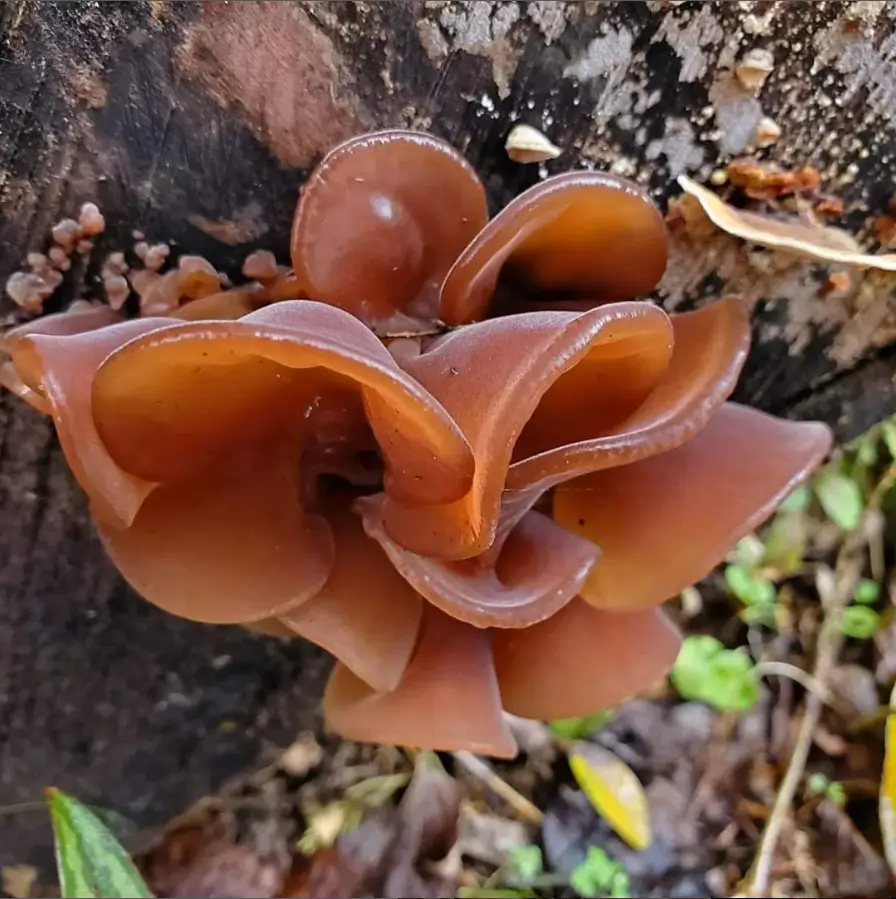
Auricularia fuscosuccinea, often referred to as the Brown Wood Ear Mushroom, is a unique variety of the wood ear mushrooms, distinguished by its darker, brownish hue and slightly firmer texture. Like its relatives, it thrives on the wood of broadleaf trees in moist, shaded environments, commonly found in forested areas that offer the damp conditions it prefers.
- Characterized by a darker brown colour and a texture that is somewhat firmer than the more common Auricularia auricula, offering a different culinary experience.
- Nutritionally, Auricularia fuscosuccinea is rich in dietary fibers, antioxidants, and compounds that are thought to support cardiovascular health and boost the immune system.
- Not as widely known or used as some other wood ear mushrooms, it still holds a place in traditional medicine and gourmet cooking for its health benefits and unique properties.
- Cultivation efforts aim to replicate the natural moist and shaded conditions it thrives in, allowing for sustainable harvesting and increased availability for culinary use.
9. Auricularia polytricha – the Cloud Ear Mushroom or Hairy Wood Ear Mushroom
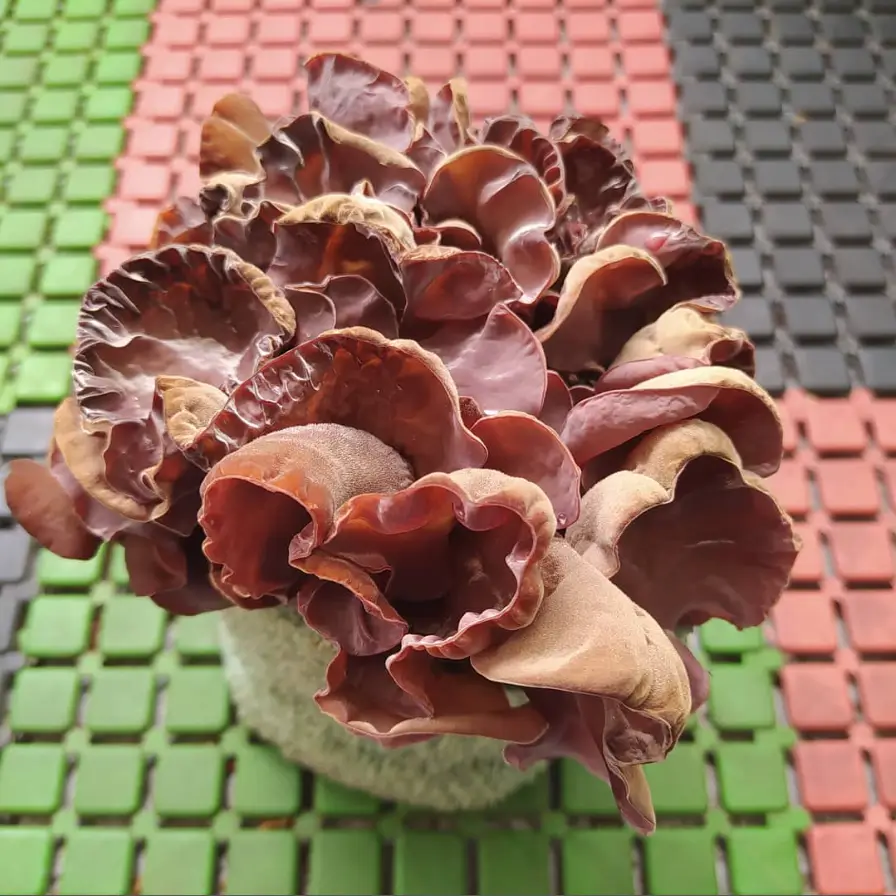
Auricularia polytricha, commonly known as the Cloud Ear Mushroom or Hairy Wood Ear Mushroom, is a distinct variant within the wood ear mushroom family, celebrated for its unique texture and health benefits. This species prefers to grow on dead or decaying wood in warm, humid climates, often found in wooded areas across Asia. It is a staple in Asian cuisine, particularly in Chinese dishes, where it is valued for its crunchy texture and ability to absorb flavors.
- Prefers the dead or decaying wood of broadleaf trees, thriving in the warm, humid environments typical of many Asian forests.
- Distinguished by its slightly rough, “hairy” surface, Auricularia polytricha offers a more pronounced texture compared to the smoother varieties of wood ear mushrooms.
- Contains high levels of dietary fiber, antioxidants, and several compounds known to contribute to cardiovascular health, blood circulation, and immune system support.
- In traditional Chinese medicine, it is often used for its purported health benefits, including improving circulation and reducing cholesterol.
10. Coprinus comatus – the Shaggy Mane or Lawyer’s Wig

Coprinus comatus, commonly known as the Shaggy Mane or Lawyer’s Wig, is a distinctive mushroom and a good candidate for ‘second division’ edible species. This delicacy emerges in grassy areas, roadsides, and meadows, often after rain. It is widely appreciated for its ephemeral nature; the mushroom quickly matures and dissolves into a black, inky substance, adding to its intrigue and culinary urgency.
- It thrives in open, grassy areas, including roadsides, lawns, and meadows, preferring moist soils. This makes it a common sight in urban and suburban settings as well as in the wild.
- It is characterized by its tall, cylindrical cap covered in white to cream shaggy scales, giving it the appearance of a lawyer’s wig, which quickly turns to liquid as the mushroom matures.
- The mushroom’s delicate, slightly sweet flavour and tender texture are best enjoyed when it’s young before the liquefaction process begins.
- Its unique auto-digestion process, where the cap dissolves into a black ink, is an adaptation for spore dispersal, but it also means the mushroom must be consumed soon after picking.
11. Clitocybe geotropa – the Giant Funnel
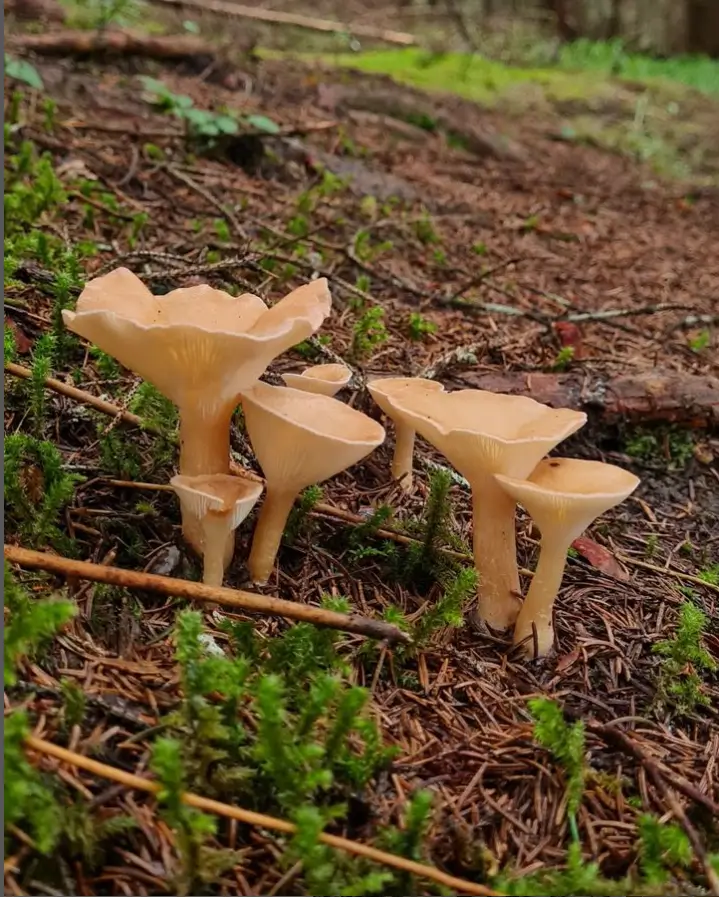
Clitocybe geotropa, commonly known as the Giant Funnel, is a remarkable mushroom known for its large, impressive size and funnel-shaped cap. It is also known as Big Cup mushroom (Dabeixun), Pig Stomach mushroom (Zhudugu) or Big Cup Umbrella (Dabeisan) in China. This species is found in wooded areas, forming rings or arcs in the soil, often around decaying organic matter. It thrives in damp, shaded environments and is a sight to behold when fully grown, with some specimens reaching substantial diameters.
- Recognized by its large, funnel-shaped cap, which can span significant diameters, making it one of the larger mushroom species encountered in the wild.
- The cap’s colour ranges from pale to a more pronounced brown, with the size and shape contributing to its common name and making it easily identifiable.
- While it is edible, Clitocybe maxima requires careful identification due to the presence of look-alikes that may be toxic; thus, knowledge and caution are advised when foraging.
- The formation of fairy rings or arcs in forested areas creates a magical landscape appearance and indicates the ecological role of Clitocybe maxima in decomposing organic matter and contributing to soil health.
12. Dictyophora indusiata – Bamboo Fungus, Veiled Lady, or Phallus indusiatus
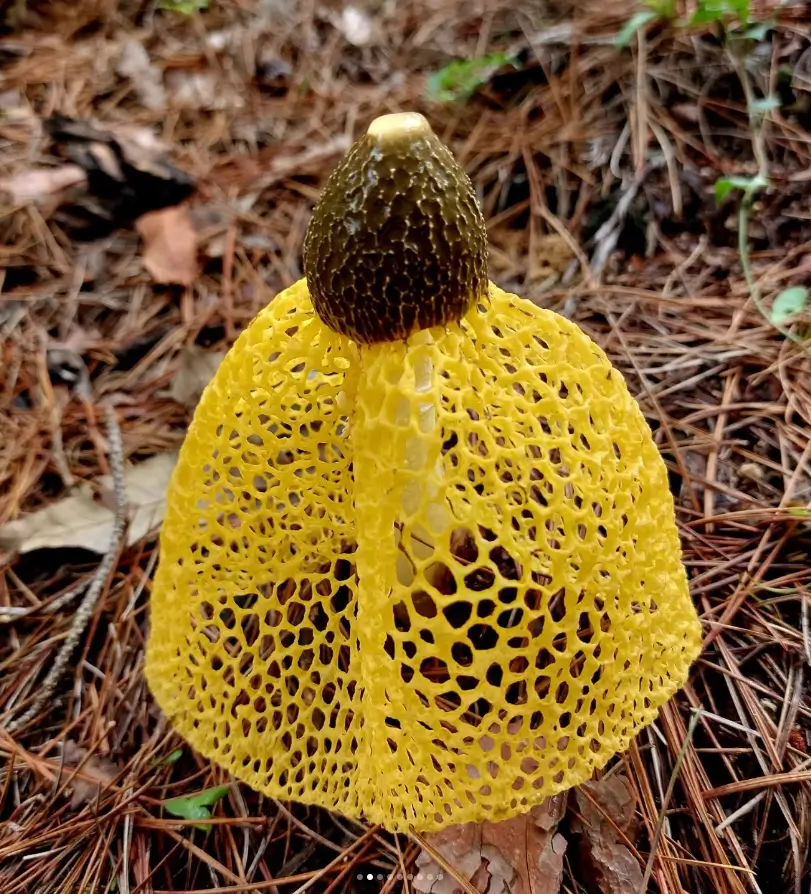
Dictyophora indusiata, commonly known as the Bamboo Fungus, Veiled Lady, or Phallus indusiatus, is a notable species within the stinkhorn mushroom family. It is renowned for its striking appearance, featuring a white, net-like skirt (or indusium) that hangs beneath the cap, resembling a delicate, lacy veil. This mushroom is predominantly found in tropical and subtropical regions, flourishing in rich, moist soils within woodlands and forests.
- Prefers the warmth and humidity of tropical and subtropical environments, where it grows in rich, moist soils, often in woodlands and bamboo forests.
- Has a prominent, egg-like base from which the stalk extends, capped with a slimy, spore-laden head. The indusium that hangs below the cap is its most distinctive feature
- The mushroom emits a distinct odor designed to attract insects, aiding in the dispersal of its spores, a fascinating adaptation that ensures its reproduction and spread within its habitat.
- Dictyophora indusiata is also appreciated for its culinary and medicinal value, especially in Asian cultures.
- It is considered a delicacy in Chinese cuisine, often used in soups and stir-fries, and is believed to have various health benefits, including immune system enhancement.
13. Flammulina velutipes – the Enoki Mushroom or Winter Mushroom
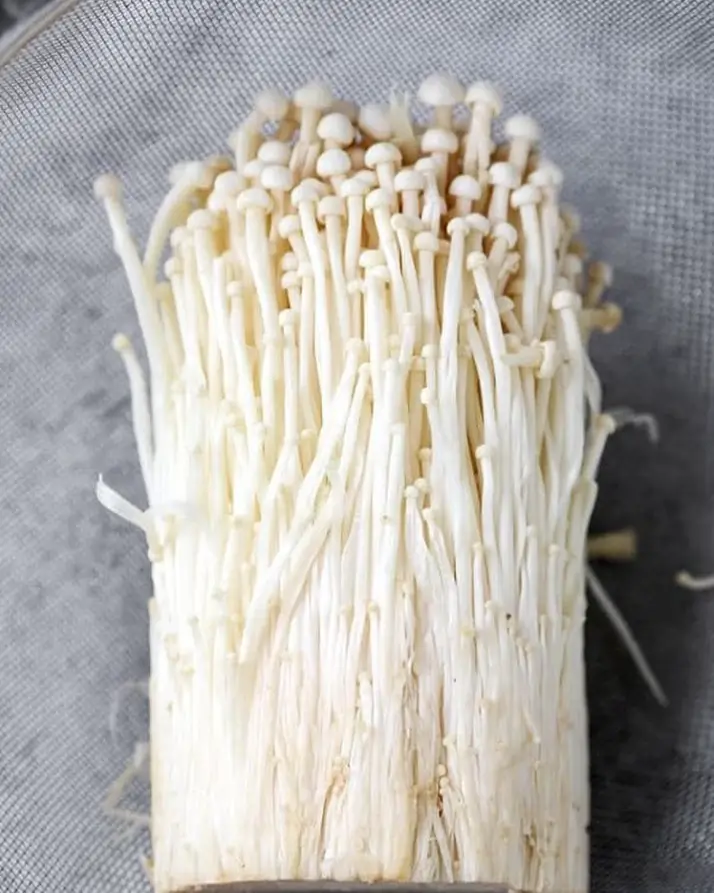
Flammulina velutipes, commonly known as the Enoki Mushroom or Winter Mushroom, have delicate, slender stems and small, white caps. This mushroom is a popular ingredient in Asian cuisine, known for its crisp texture and mild, slightly sweet flavour. It thrives in cool temperatures, so it naturally grows on the wood of deciduous trees, such as elms and willows, during the colder months.
- Enoki mushrooms are valued not only for their flavor and texture but also for their nutritional benefits, including high levels of vitamins, minerals, and dietary fiber, contributing to their appeal as a healthy food choice.
- Commonly used in soups, salads, and stir-fries, enoki mushrooms add a crunchy texture and a subtle, sweet flavor that complements a wide range of dishes.
- The cultivation of Flammulina velutipes has become sophisticated, allowing for year-round availability, making enoki mushrooms a staple ingredient in kitchens worldwide, far beyond their native Asian forests.
14. Ganoderma Lucidum – the “Mushroom of Immortality”
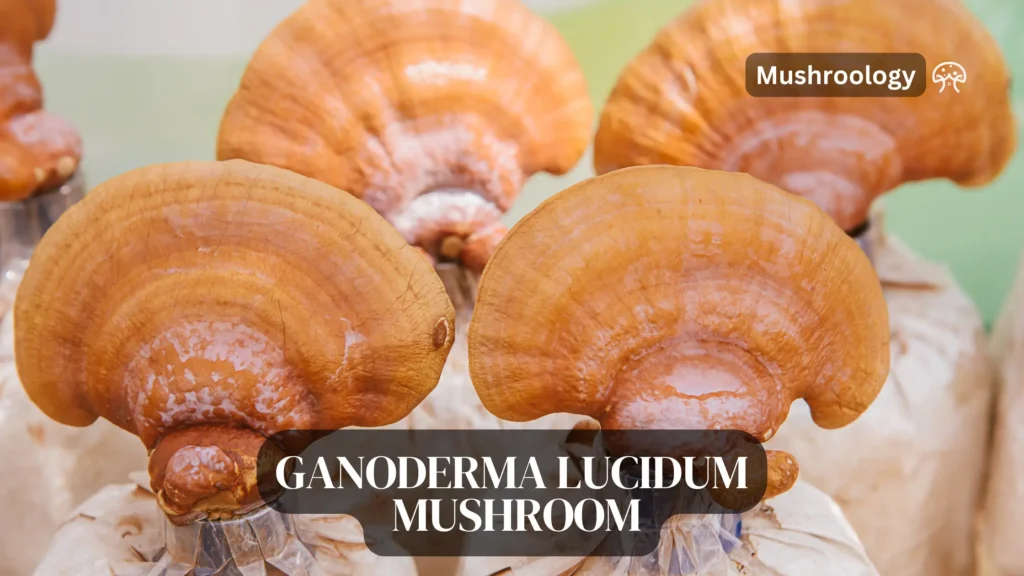
Ganoderma lucidum, a mushroom with a rich history of medicinal use, is known by various names across different cultures. In Japan, it’s referred to as Reishi or Mannentake, meaning the “10,000 Year Mushroom,” while in China and Korea, it’s called Ling Chi, Ling Chih, or Ling Zhi, translating to the “Mushroom (Herb) of Immortality.”
This mushroom is celebrated for its health-boosting properties and is a common motif in ancient art across Chinese, Korean, and Japanese cultures. It symbolizes royalty, health, longevity, wisdom, and happiness, often appearing alongside esteemed sages in royal tapestries. There were beliefs in China that it could even resurrect the dead when used in a specific tincture.
Ganoderma lucidum, the central species of its genus, primarily grows on hardwoods like oak. It has close relatives, G. tsugae and G. oregonense, which prefer conifers, with G. tsugae commonly found on hemlocks and G. oregonense on a variety of conifers. These mushrooms can adapt their growth, particularly the formation of their stalks, to different environmental conditions and substrates, including a mix of conifer and hardwood sawdust, making their specific habitat-based classification somewhat challenging.
Description and Distribution
The mushroom, which can range from 5-20 cm in diameter, has a woody texture, a shiny lacquered appearance when wet, and comes in colors from dull red to nearly black. Its underside features white pores that brown upon touch, with new growth areas starting whitish and darkening with age. Spores released from the underside give the cap a powdery brown look when dry. The stem, which can be white to yellow, darkening over time, is eccentrically or laterally attached, often sinuous, and varies in size.
Ganoderma lucidum is found worldwide, from the Amazon and southern North America to much of Asia, thriving less in temperate and more in subtropical regions.
15. Grifola frondosa – the Maitake
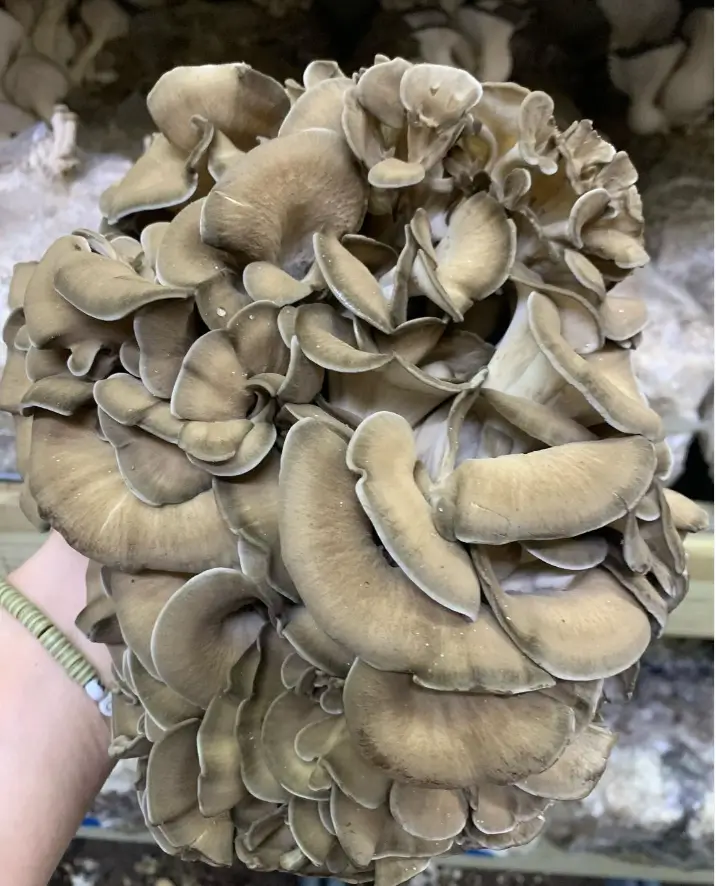
Grifola frondosa, widely known as Hen of the Woods or Maitake, is a prized mushroom for both its culinary appeal and medicinal properties. This fungus grows in large, overlapping clusters at the base of trees, particularly oaks, in temperate forests. Its appearance resembles the ruffled feathers of a hen, which is how it earned its common name.
- Characterized by its large, leaf-like fronds that cluster together to form a mass that can weigh several pounds, offering a rich, earthy flavor and a firm, chewy texture.
- Renowned for its health benefits, including support for the immune system and potential to regulate blood sugar levels, Grifola frondosa has been the subject of numerous studies exploring its medicinal qualities.
- Contains beta-glucans, antioxidants, and other bioactive compounds that contribute to its status as a functional food, believed to offer protective effects against certain diseases.
- The cultivation of Maitake has been optimized to allow for year-round production, making it more accessible for its nutritional and culinary applications and enhancing its popularity beyond traditional foraging.
16. Hericium erinaceus – the Lion’s Mane Mushroom

Hericium erinaceus, commonly known as Lion’s Mane Mushroom, is renowned for its unique appearance and remarkable health benefits. This mushroom grows on hardwood trees, particularly beech, in temperate forests around the world. Its distinctive look, resembling a white, shaggy mane of a lion or a cascade of small, icicle-like spines, makes it easily identifiable.
- Prefers the trunks of dead or dying hardwood trees, such as beech, where it plays a crucial role in the ecosystem by breaking down the wood and recycling nutrients.
- Known for its mild, sweet flavor, reminiscent of seafood, Lion’s Mane is versatile in the kitchen, used in dishes ranging from soups and sauces to seafood substitutes in vegetarian cuisine.
- Beyond its culinary appeal, Hericium erinaceus is celebrated for its potential neuroprotective properties, with research suggesting it may support brain health, enhance cognitive function, and offer mood-stabilizing benefits.
- Contains bioactive compounds such as hericenones and erinacines, which are believed to stimulate the growth of brain cells and have been linked to potential benefits in the treatment of neurodegenerative diseases.
17. Hypsizygus marmoreus – the Beech Mushroom or Buna-shimeji
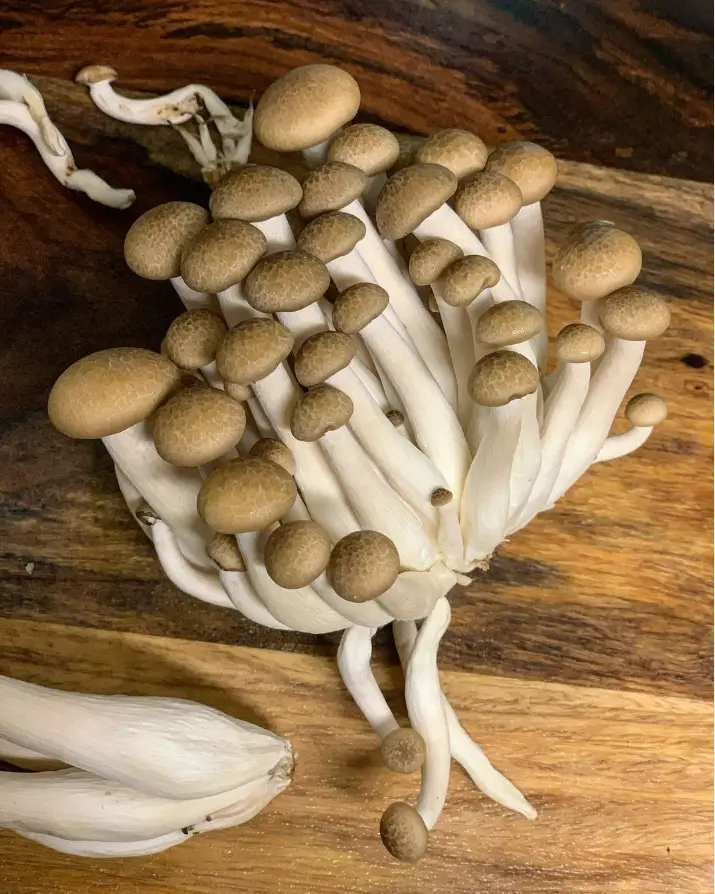
Hypsizygus marmoreus, commonly known as the Beech Mushroom or Buna-shimeji, is a culinary favourite in Asian cuisine, known for its small, round caps and elongated, slender stems. This mushroom naturally grows on beech trees and other hardwoods, thriving in cool climates that simulate its native forest environments. It is particularly appreciated for its firm texture and slightly nutty, sweet flavor, making it a versatile ingredient in various dishes.
- Typically found growing in clusters on living or dead hardwood trees, such as beech, where it contributes to the decomposition of wood and the recycling of nutrients within forest ecosystems.
- Its small, ivory-to-brown caps and long, cream-coloured stems are distinctive, offering a visually appealing addition to culinary presentations.
- It contains nutritional benefits, including high levels of protein, fibre, vitamins, and minerals, making it a tasty and healthful choice for inclusion in meals.
- In culinary use, Hypsizygus marmoreus is often cooked to enhance its flavor and texture, as it can be slightly bitter when raw. Cooking transforms it into a delicious, savory component of any dish.
18. Lentinula edodes – the Shiitake Mushroom
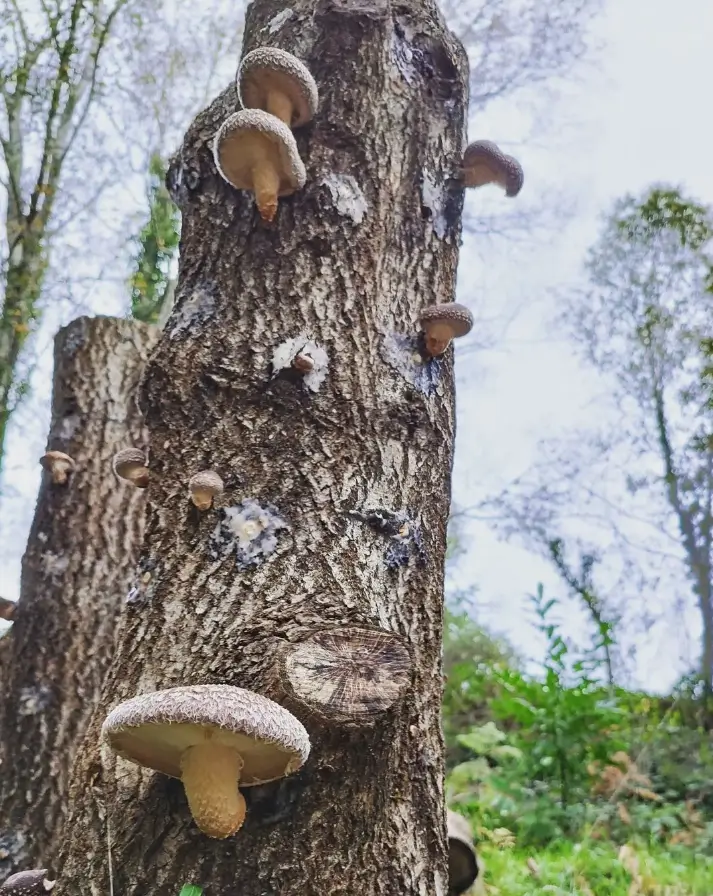
Lentinula edodes, widely known as Shiitake Mushroom, is one of the world’s most popular and cultivated mushrooms, revered not only for its rich, umami flavor but also for its numerous health benefits.
- Thrives on decaying hardwood, especially oak, where it forms a symbiotic relationship with the tree, contributing to the decomposition process and nutrient cycling in forest ecosystems.
- Recognized by its distinctive brown cap, which can vary in color from light tan to dark brown, and its white to cream gills, the Shiitake mushroom is notable for its meaty texture and robust flavor, enhancing a wide range of dishes from soups and stir-fries to grilled and roasted preparations.
- Renowned for their deep, savoury umami taste, Shiitake mushrooms add a rich flavour depth to culinary creations, making them a staple in Asian cuisine and a beloved ingredient worldwide.
- Packed with vitamins, minerals, and bioactive compounds such as lentinan, Shiitake mushrooms have been studied for their potential to boost the immune system, support heart health, and even possess anti-cancer properties.
19. Lentinula giganteus
Lentinula giganteus, commonly known as the giant oyster mushroom or shiitake mushroom, is a highly prized edible fungus belonging to the Polyporaceae family. It is renowned for its culinary versatility, medicinal properties, and ease of cultivation.
- L. giganteus possesses a large, fleshy cap that can grow up to 12 inches in diameter, with a smooth, velvety surface and a distinctive brown or tan colour.
- It is typically found growing on dead or decaying hardwood logs in forests worldwide.
- L. giganteus contains polysaccharides that have been shown to enhance immune function and protect against infections.
- Studies suggest that consuming L. giganteus may help lower cholesterol levels.
20. Lepista nuda – the Wood Blewit
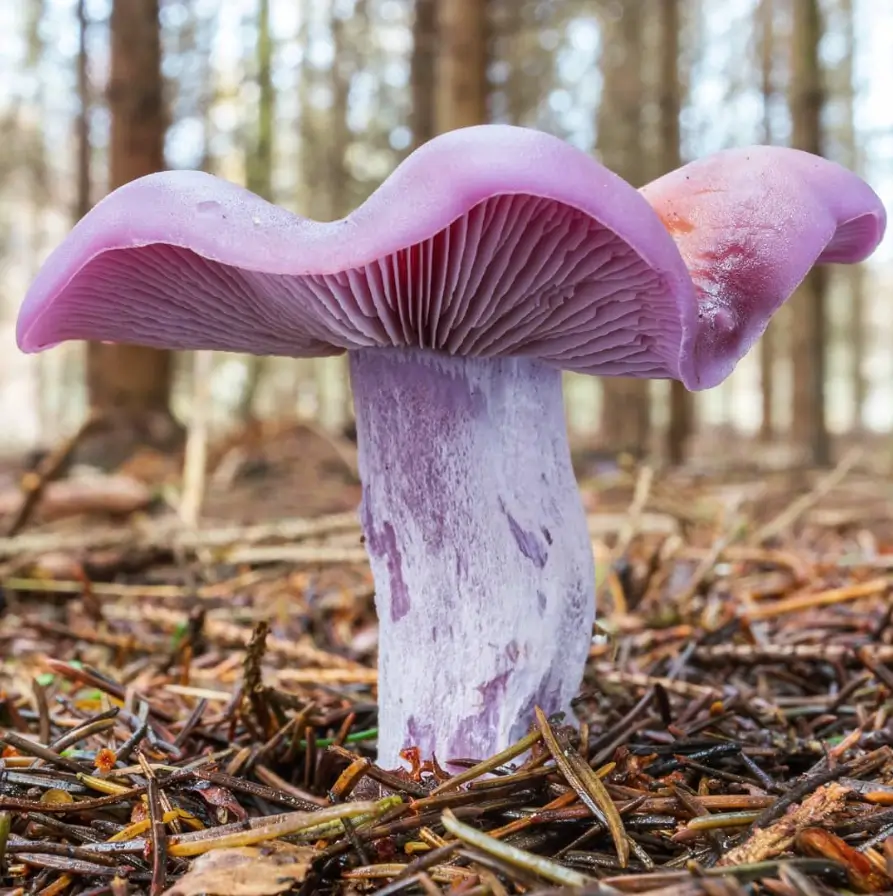
Lepista nuda, commonly known as the Wood Blewit, is a distinctive mushroom with a beautiful lilac to purple colouring and its robust, earthy flavour. It naturally occurs in deciduous and coniferous forests, thriving in leaf litter and composting wood, making it a late autumn to winter find for foragers.
- Characterized by its striking lilac to purple cap and gills, which set it apart from other mushrooms in the forest
- While delicious, it requires careful identification and cooking, as consuming it raw or undercooked can lead to digestive discomfort for some individuals. Proper preparation is key to enjoying its unique taste and texture.
- Beyond its culinary use, Lepista nuda is also noted for its ecological role in decomposing organic material, aiding in soil health and forest regeneration.
- The cultivation of Wood Blewits is not as common as other mushrooms, but it has gained popularity among mycophiles and gourmet chefs for its unique flavor profile and nutritional benefits, including high levels of protein and vitamins.
21. Lyophyllum ulmarium
Lyophyllum ulmarium, commonly known as the elm oyster mushroom or velvet foot, is an edible fungus belonging to the Lyophyllaceae family. It is prized for its culinary versatility, unique flavor, and ease of cultivation.
- L. ulmarium possesses a convex cap that ranges from 2 to 6 inches in diameter, with a smooth, velvety surface and a white or cream color
- It typically grows on dead or decaying elm trees, but can also be found on other hardwood species.
- L. ulmarium has a mild, slightly nutty flavor with a firm, meaty texture 1
- L. ulmarium is commercially cultivated on a small scale due to its unique flavor and increasing demand
22. Macrolepiota procera – the Parasol Mushroom
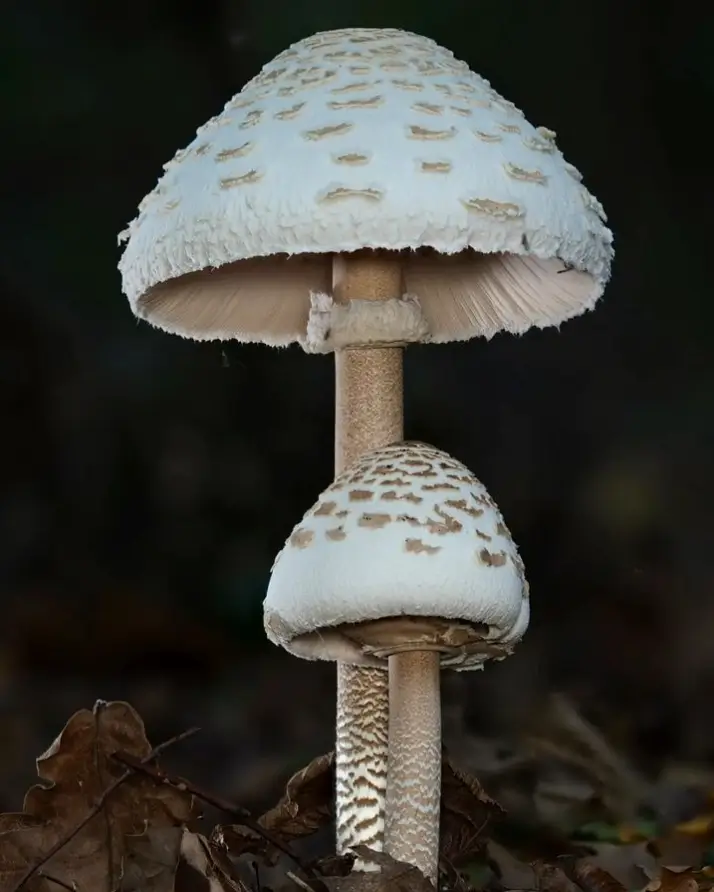
Macrolepiota procera, widely known as the Parasol Mushroom, is a distinctive and highly regarded edible mushroom celebrated for its large size, impressive appearance, and delicious flavour. This species is found in grassy areas such as meadows and pastures and along woodland edges, thriving in well-drained soils rich in organic matter.
- The Parasol Mushroom is easily recognizable by its large, umbrella-like cap, which can reach up to 30 cm (12 inches) in diameter, and its tall, slender stem.
- It prefers open, grassy areas such as meadows, pastures, and woodland edges, where it grows solitarily or in small groups, often in well-drained soils rich in organic matter.
- The stem is tall and slender, with a characteristic ring (or annulus) that can slide up and down, and a bulbous base that is sometimes encased in a loose, sack-like volva.
- It is essential to properly identify Macrolepiota procera due to the presence of look-alike species that may be poisonous. Only the cap is typically consumed, as the stem can be tough and fibrous.
23. Morchella sp. – The Morel Mushroom
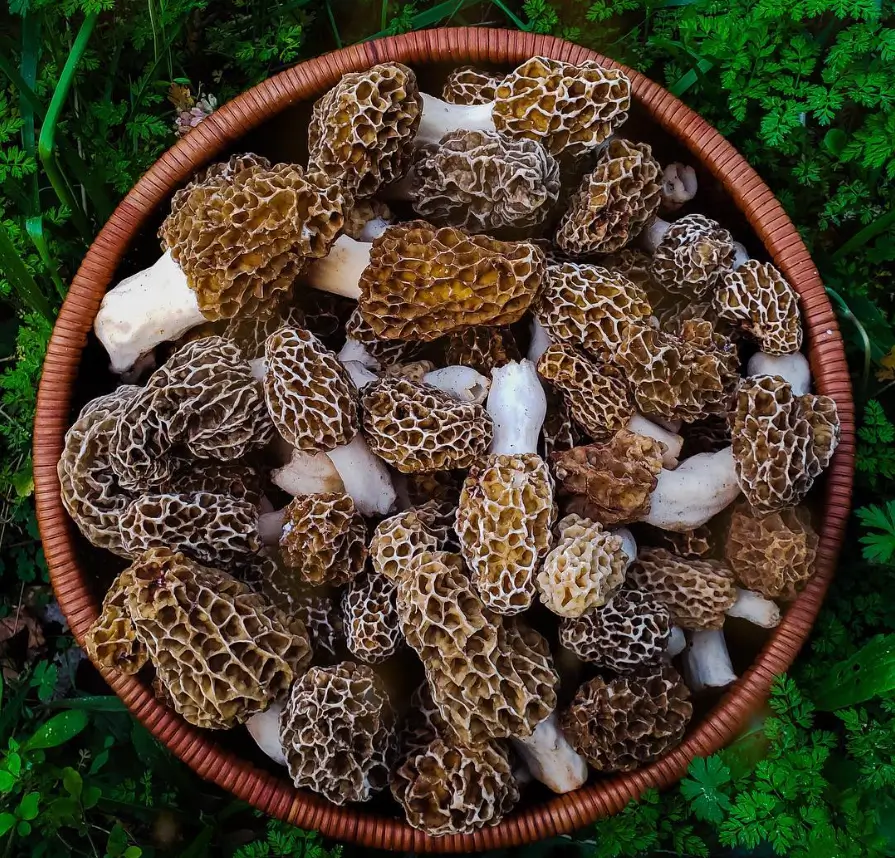
Morel mushrooms, known scientifically as Morchella, are a genus of edible sac fungi that have captivated the culinary world and foragers alike. In North America, the diversity of morels is particularly rich, with a variety of species that can be categorized into distinct groups. Let’s explore the scientific details of these groups and their unique characteristics.
Black Morels: The Early Risers
Black morels, which include Morchella angusticeps, Morchella elata, and Morchella conica, are known for their early appearance in the morel season. These fungi are part of the elata clade and are often associated with burn sites, hence the nickname “burn morels.” They typically have caps with off-white to grey to charcoal-black ridges and can range in size from 1 inch up to 4 inches, with some species like the spike morel reaching up to 6 inches.
Yellow Morels
Yellow morels, including Morchella deliciosa and Morchella esculenta, are the most common and largest morels found, with sizes ranging from 1 inch up to a remarkable 12 inches. These mid-season mushrooms are part of the esculentoid clade and are often found in wooded areas near trees’ drip lines or where wooded areas meet open fields.
White Morels
The white morel, a unique species found on the West Coast, breaks the typical morel association with trees. It is known to grow in disturbed ground such as landscaping sites, gardens, and woodchip beds. This species has a striking visual contrast with vertically aligned white ridges when young, turning yellowish-brown as it matures.
Half-free Morels
Half-free morels, such as Morchella semilibera, have caps that hang partially free over the sides of the stipe. While their unique morphology often sets them apart, DNA evidence situates them within the elata clade. These morels are considered edible, though they are not as highly regarded in terms of taste as other morel species.
Burn Morels
Burn morels, which include species like Morchella tomentosa, are known for their pyrophilic behavior, flourishing in forests that have recently experienced wildfires. These morels are highly sought after due to their tendency to appear in abundance after such events.
Key Characteristics:
- Grow abundantly in recently burned forests
- Associated with higher alkaline soil conditions
- Highly prized by commercial pickers
24. Oudemansiella radicata
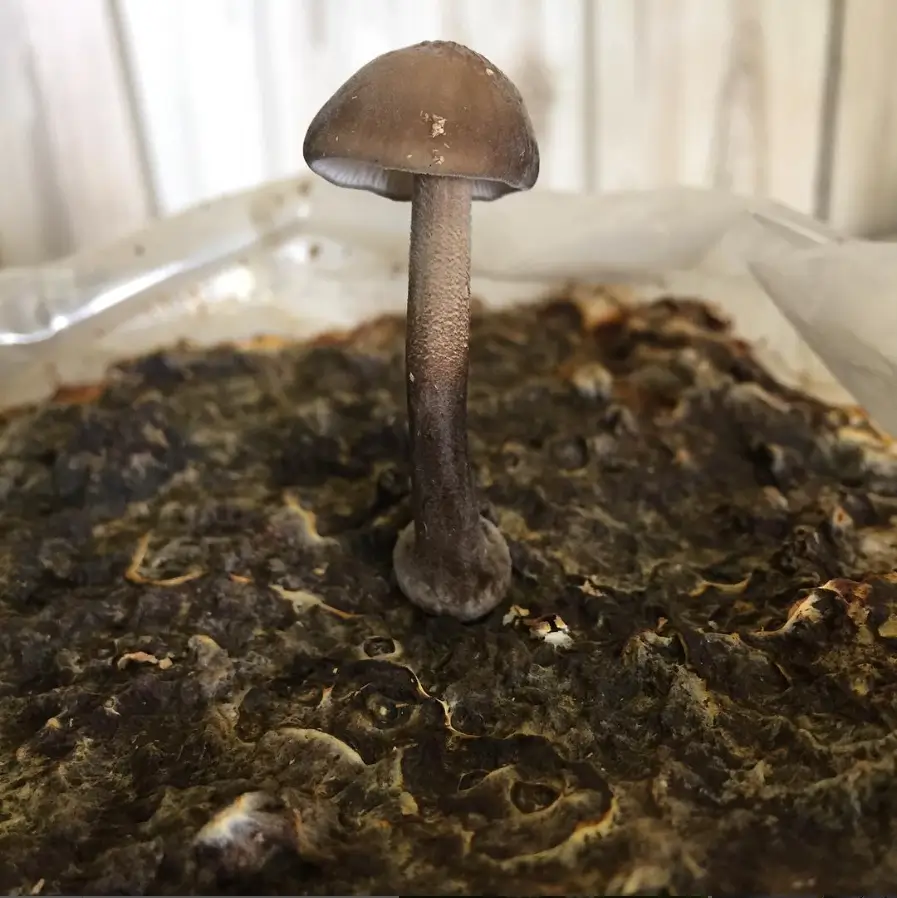
Oudemansiella radicata, commonly known as the deep root mushroom, beech rooter, or rooting shank, is a species of mushroom that stands out for its preference for growing on the decaying wood of broadleaf trees, often appearing to emerge directly from the soil due to its long, rooting stem.
- Typically grows on decaying wood of broadleaf trees, with a long, slender stem that appears to root into the ground, giving the mushroom its common name, Rooting Shank.
- Prefers moist, shaded environments found in forests, parks, and wooded areas, where it contributes to the decomposition process and nutrient cycling within these ecosystems.
- Characterized by a slim, elegant stem and a cap that ranges from creamy white to light brown, often with a smooth, glossy surface that can become sticky in wet conditions.
- The flesh of the Rooting Shank is generally considered tough and not particularly flavorful, making it less sought after for cooking compared to other mushroom species.
25. Pholiota nameko – the Nameko Mushroom
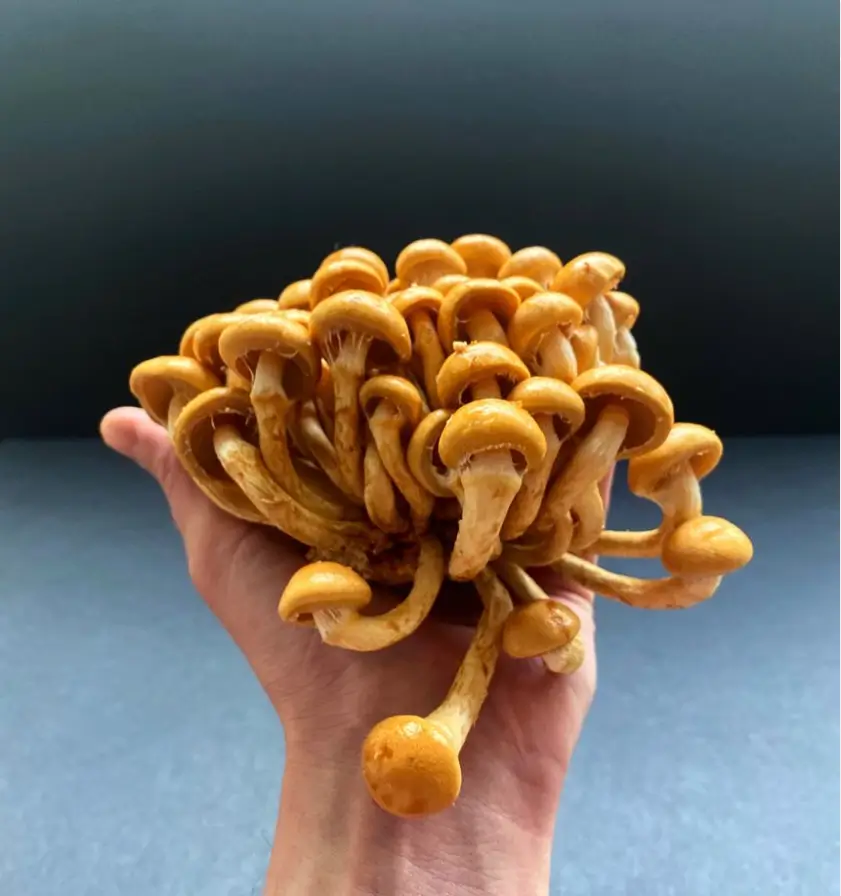
Pholiota nameko, commonly known as the Nameko Mushroom, is a small, amber-brown mushroom prized in Japanese cuisine for its unique gelatinous coating and rich, earthy flavor. This mushroom typically grows in clusters on the stumps or trunks of deciduous trees, particularly beech and oak, thriving in cool, moist environments.
- Characterized by its small, convex cap that ranges in color from amber to orange-brown, coated with a distinctive gelatinous layer that adds a unique texture to dishes.
- The gelatinous coating not only contributes to the mushroom’s culinary appeal but also helps in retaining moisture, making the Nameko an excellent ingredient for soups and broths where it can impart a silky texture.
- Nutritionally, Nameko mushrooms are a good source of vitamins, minerals, and antioxidants, adding to their value as a healthful addition to the diet.
- The Nameko Mushroom’s unique texture and flavor profile have made it a beloved ingredient in Japanese cuisine, and its cultivation has allowed food enthusiasts around the world to enjoy this special fungus.
26. Pleurotus citrinopileatus – the Golden Oyster Mushroom

Pleurotus citrinopileatus, commonly known as the Golden Oyster Mushroom, is a member of the oyster mushroom family and is highly regarded for its visual appeal, unique flavor, and nutritional benefits. It typically grows in clusters on dead hardwoods, such as beech and aspen, and is found in a variety of forested and wooded environments.
- Features vibrant yellow to golden caps, which are thin and pleated, with a white to pale stem. The striking color and delicate structure of the Golden Oyster Mushroom make it a favorite among foragers and cultivators alike.
- Offers a slightly sweet and nutty flavor, less intense than some of its Pleurotus cousins, making it a versatile ingredient in culinary applications. It can be used in a wide range of dishes, from stir-fries and soups to gourmet preparations.
- Cultivation of the Golden Oyster Mushroom has become popular due to its rapid growth, ease of cultivation, and high yield.
- It can be grown on a variety of organic substrates, including straw and sawdust, making it accessible for both commercial producers and home cultivators.
27. Pleurotus cornucopiae – the Branched Oyster Mushroom
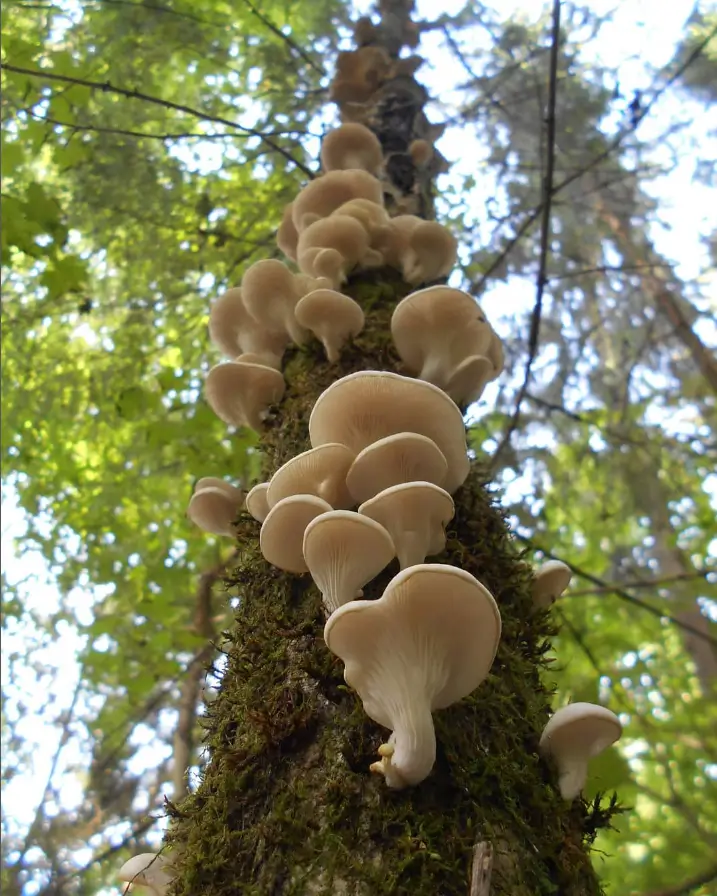
Pleurotus cornucopiae, commonly known as the Branched Oyster Mushroom, is a species of edible fungus that belongs to the Pleurotus genus, sharing many of the desirable characteristics of its relatives.
- Prefers dead or decaying hardwood substrates, playing a significant role in the decomposition process and contributing to the cycling of nutrients within forest ecosystems.
- The mushroom is characterized by its unique growth habit, with clusters that can feature branching stems and multiple caps, distinguishing it from other oyster mushroom species that typically have a single stem and cap.
- Pleurotus cornucopiae has a delicate, slightly sweet flavor similar to other oyster mushrooms.
- It is rich in protein, vitamins, minerals, and antioxidants
- Cultivation of the Branched Oyster Mushroom is possible on a variety of organic substrates, making it accessible for commercial cultivation and hobbyist growers alike.
28. Pleurotus cystidiosus – the Abalone Mushroom
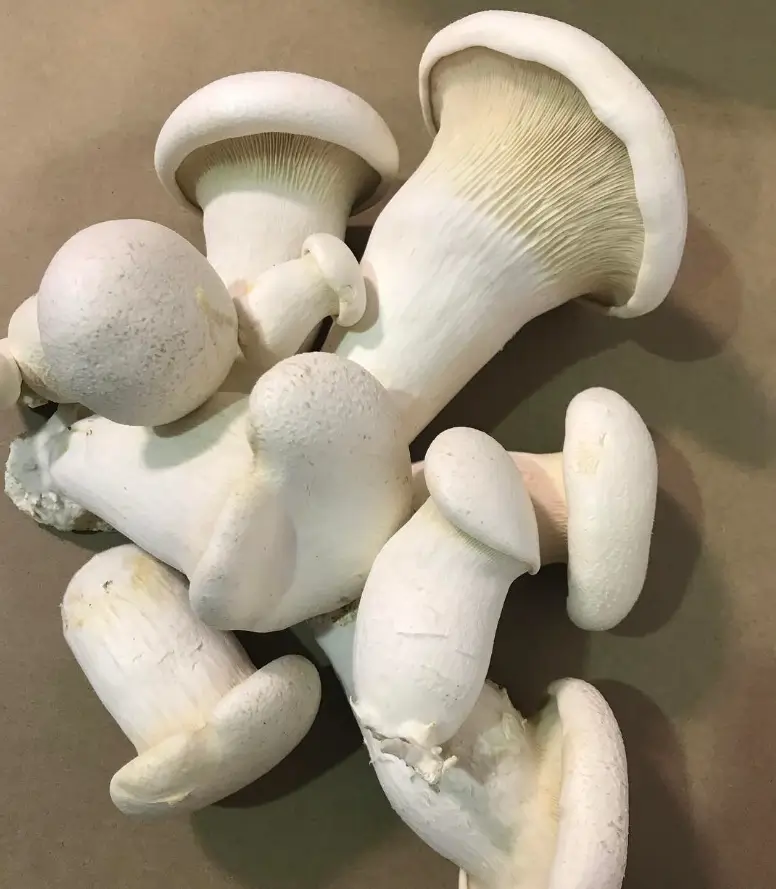
Pleurotus cystidiosus, known as the Abalone Mushroom or Oyster Mushroom, is a unique species within the Pleurotus genus, distinguished by its smooth, often iridescent, cap that resembles the inner shell of an abalone. This mushroom typically grows on hardwoods in warm, humid climates, making it a common sight in Asian forests and increasingly popular in cultivation due to its desirable culinary and nutritional properties.
- Features a distinctive cap that can range in color from white to shades of gray or brown, often with a slight iridescence that makes it visually reminiscent of an abalone shell. The cap is usually smooth, with a slight depression in the center.
- Pleurotus cystidiosus offers a tender texture and a subtle, slightly sweet flavor, making it a versatile ingredient in a variety of dishes, including stir-fries, soups, and as a meat substitute in vegetarian and vegan recipes.
- It is rich in protein, fiber, vitamins (especially B vitamins), minerals (such as iron, selenium, and potassium), and antioxidants, contributing to its status as a functional food with potential health benefits.
- Its ability to grow at relatively high temperatures makes it suitable for cultivation in a wide range of environments.
- Pleurotus cystidiosus is also of interest for its potential medicinal properties, including immune system support and cholesterol-lowering effects, though more research is needed to fully understand these benefits.
29. Pleurotus djamor – the Pink Oyster Mushroom
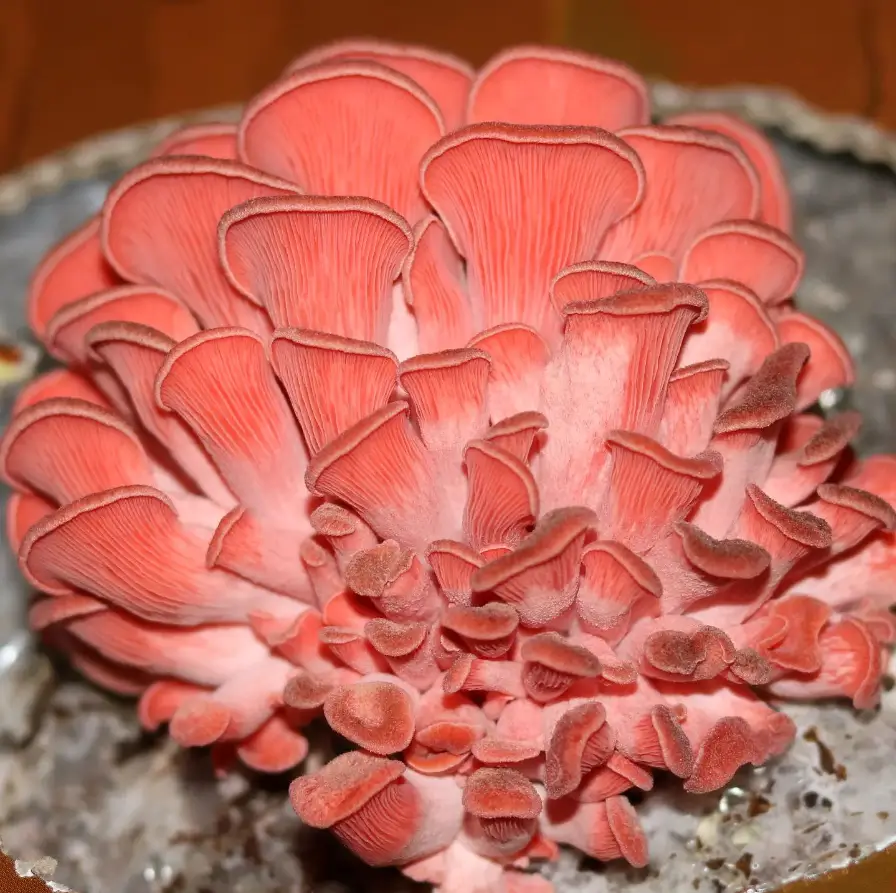
Pleurotus djamor, commonly known as the Pink Oyster Mushroom, is a visually striking species of edible fungus that belongs to the Pleurotus genus. This mushroom is notable for its vibrant pink colour, which adds a unique aesthetic appeal to dishes, although the colour may fade when cooked. Pleurotus djamor thrives in warm, humid climates and is often found growing on decaying hardwoods, making it a popular choice for cultivation in tropical and subtropical regions.
30. Pleurotus eryngii – the King Oyster Mushroom
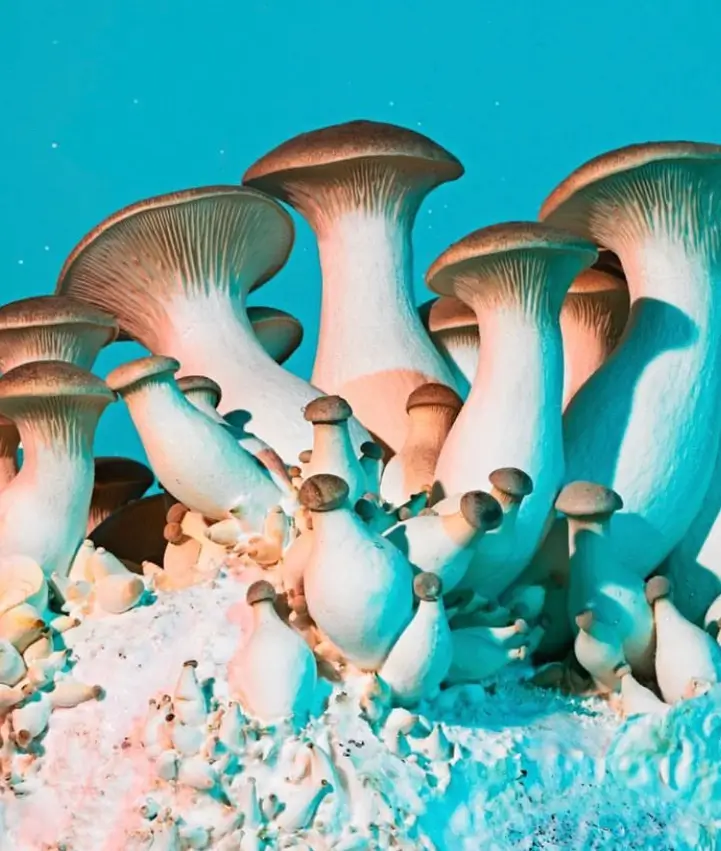
Pleurotus eryngii, commonly known as the King Oyster Mushroom, is esteemed for its substantial size, meaty texture, and savory flavor, making it a favorite in culinary circles around the world. Unlike other members of the Pleurotus genus, which typically grow on dead hardwood, Pleurotus eryngii has a unique ecological niche, preferring the roots of herbaceous plants, particularly those in the Eryngium genus, in natural settings.
- Thrives in a symbiotic relationship with the roots of certain herbaceous plants, including thistles, which is a distinct ecological adaptation within the Pleurotus genus.
- Its robust texture remains firm even when cooked, offering a chewiness similar to that of scallops or abalone, which is highly prized in gourmet cooking for its ability to absorb flavors while maintaining structural integrity.
- Pleurotus eryngii is rich in protein, fiber, vitamins (including B vitamins and vitamin D), minerals (such as potassium, iron, and selenium), and antioxidants, contributing to its nutritional value and making it a healthy addition to any diet.
- Cultivation of the King Oyster Mushroom has become increasingly popular due to its desirable culinary characteristics.
- Beyond its culinary applications, Pleurotus eryngii is also of interest for its potential health benefits, including immune system support, anti-inflammatory properties, and the ability to lower cholesterol levels, though further research is needed to fully understand these effects.
31. Pleurotus ferulae – the Ferula Mushroom
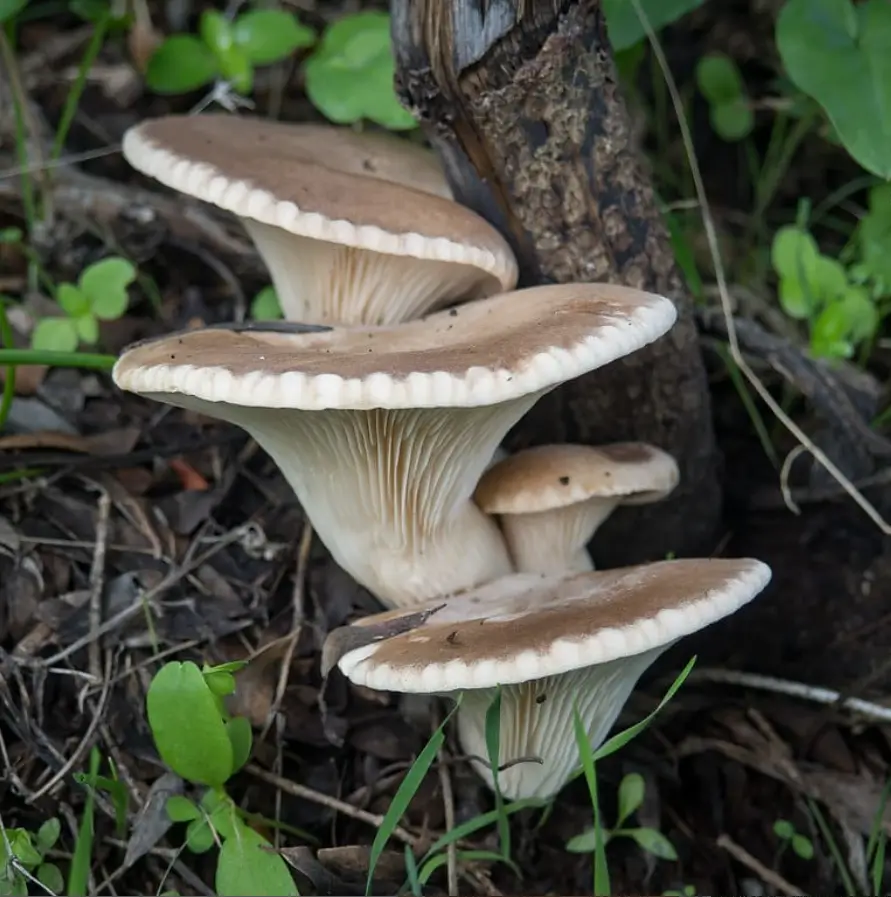
Pleurotus ferulae, also known as the Ferula Mushroom, is a species of edible fungus closely related to the more widely known oyster mushrooms. This mushroom is distinctive for its association with the roots of the Ferula plant, a genus of large, herbaceous perennials in the carrot family, found primarily in arid and semi-arid regions of the Mediterranean, Middle East, and Central Asia.
- Grows symbiotically with the decaying roots of Ferula plants, showcasing a unique ecological niche among fungi by leveraging the specific decaying organic matter found in arid and semi-arid regions.
- Characterized by its large, fleshy caps and relatively short stems, the Ferula Mushroom exhibits a creamy to pale yellow color, aligning with its desert habitat and plant associations.
- Nutritionally, Pleurotus ferulae is rich in proteins, fibers, vitamins, and minerals, adding to its desirability as a healthful food source. Like other oyster mushrooms, it contains antioxidants and compounds beneficial to health, including potential cholesterol-lowering effects.
- The cultivation of Pleurotus ferulae outside its natural habitat is relatively rare but possible, typically involving the replication of its specific growing conditions, including substrate composition similar to the decaying Ferula roots.
32. Pleurotus florida – the White Oyster Mushroom
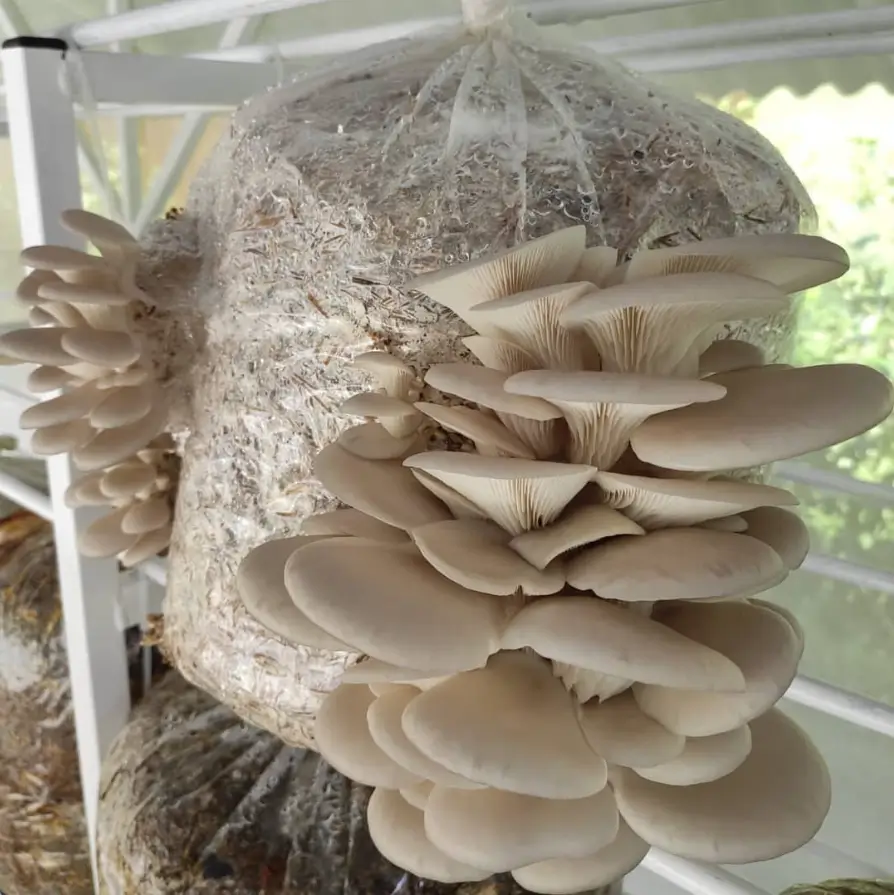
Pleurotus florida, commonly referred to as the White Oyster Mushroom, is a variant of the oyster mushroom species known for its pale to white caps and preference for growing on hardwood substrates. This mushroom is cultivated and appreciated worldwide for its mild flavor, tender texture, and versatility in culinary applications. Pleurotus florida shares many characteristics with its Pleurotus cousins, making it a popular choice for both commercial cultivation and home growers.
33. Pleurotus nebrodensis – the Sicilian Mushroom or White Ferula Mushroom
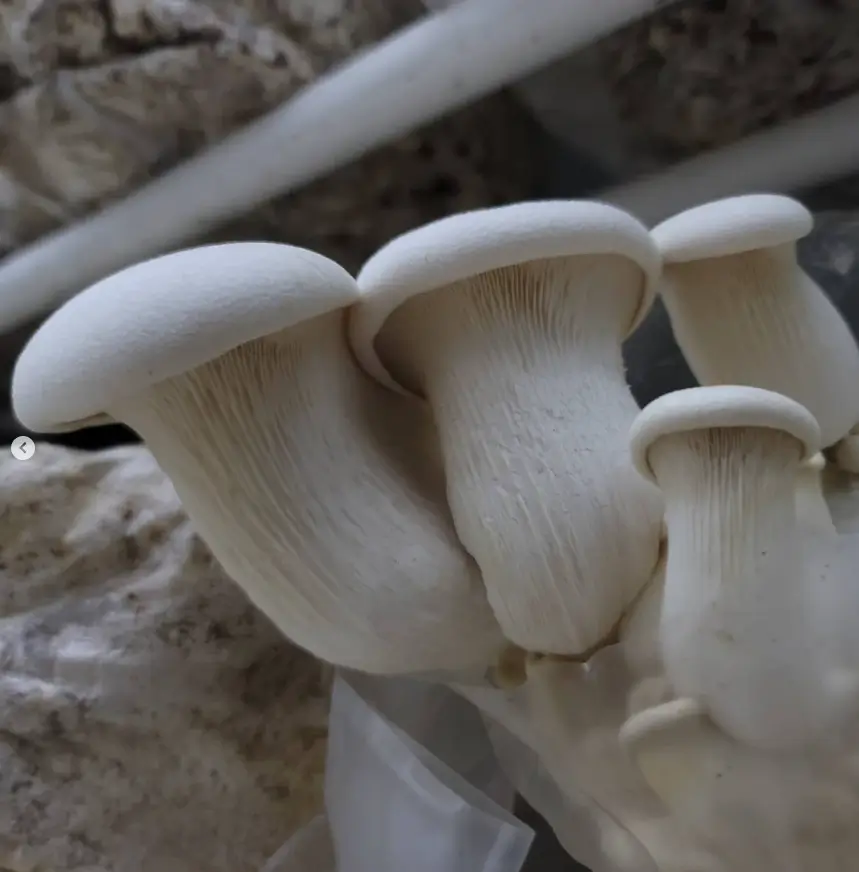
Pleurotus nebrodensis, commonly known as the Sicilian Mushroom or White Ferula Mushroom, is a rare and highly prized species of oyster mushroom. This mushroom is endemic to the Mediterranean region, particularly found in the mountainous areas of Sicily, Italy, where it grows in symbiosis with the roots of Ferula plants, a genus of giant fennel. Pleurotus nebrodensis is renowned for its unique taste and texture, as well as its scarcity, which has led to it being considered a delicacy and, at times, endangered.
34. Pleurotus ostreatus – the Oyster Mushroom
Pleurotus ostreatus, commonly known as the Oyster Mushroom, is one of the most popular and widely cultivated edible mushrooms due to its rich flavor, nutritional benefits, and ease of cultivation. This species is named for its oyster-shaped cap and typically grows in clusters on the trunks of dead hardwood trees, such as beech and oak, though it is also capable of growing on a variety of organic substrates in cultivation settings.
- Features broad, fan-shaped caps that range in color from white to grey or light brown, with short, stubby stems. The caps are smooth, with a soft texture, and the edges are often slightly curled.
- Known for its delicate, slightly sweet flavor and tender, meaty texture, making it a versatile ingredient in a wide range of culinary dishes, from stir-fries and soups to sauces and as a meat substitute in vegetarian and vegan recipes.
- Rich in nutrients, including protein, vitamins B and D, minerals such as potassium, iron, and selenium, and dietary fibers, adding to its appeal as a healthful food choice.
- Cultivation of Pleurotus ostreatus is widespread due to its adaptability to various growing mediums, including straw, sawdust, and coffee grounds, making it accessible for both commercial mushroom farms and home cultivators.
The Oyster Mushroom’s popularity is well-deserved, given its delicious taste, versatility in cooking, and the ease with which it can be grown, making it a staple in the diets of mushroom enthusiasts and gourmet chefs alike.
35. Pleurotus sajor-caju – the Grey Oyster Mushroom or the Indian Oyster Mushroom
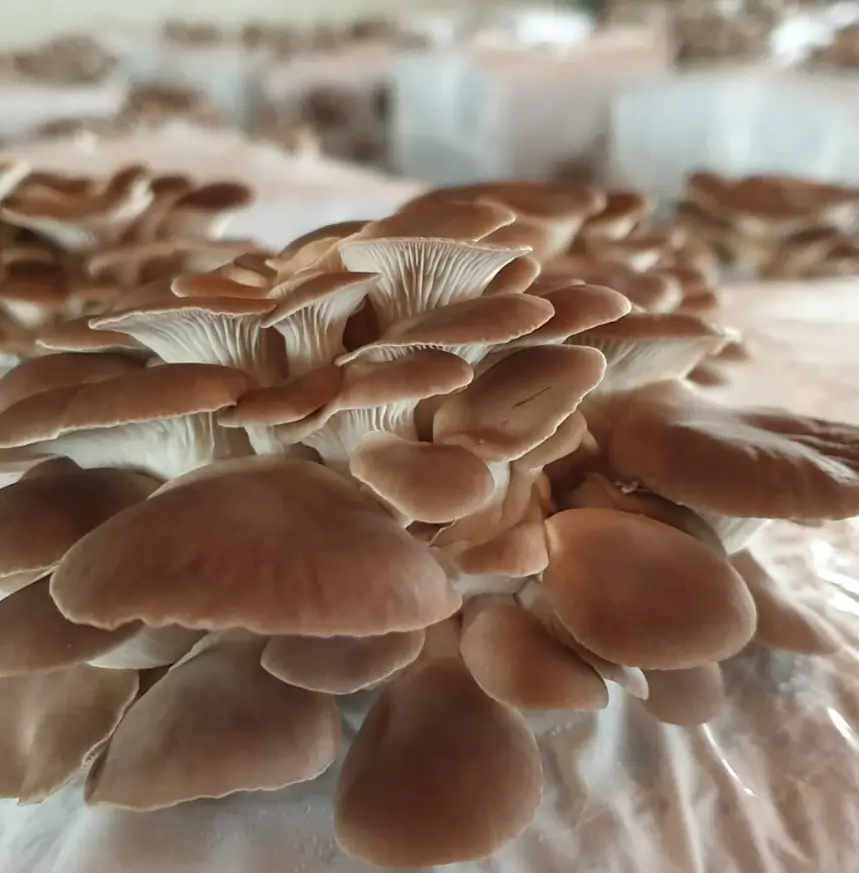
Pleurotus sajor-caju, commonly known as the Grey Oyster Mushroom or the Indian Oyster Mushroom, is a versatile and widely cultivated species within the Pleurotus genus. It thrives in tropical and subtropical climates, growing on a variety of lignocellulosic materials, which makes it an important species for mushroom cultivation in warmer regions around the world.
Pleurotus sajor-caju’s adaptability to warm climates and a wide range of substrates, coupled with its nutritional and culinary qualities, make it an important species for both commercial cultivation and dietary inclusion in various cultures.
36. Stropharia rugoso-annulata – the Wine Cap Mushroom or King Stropharia
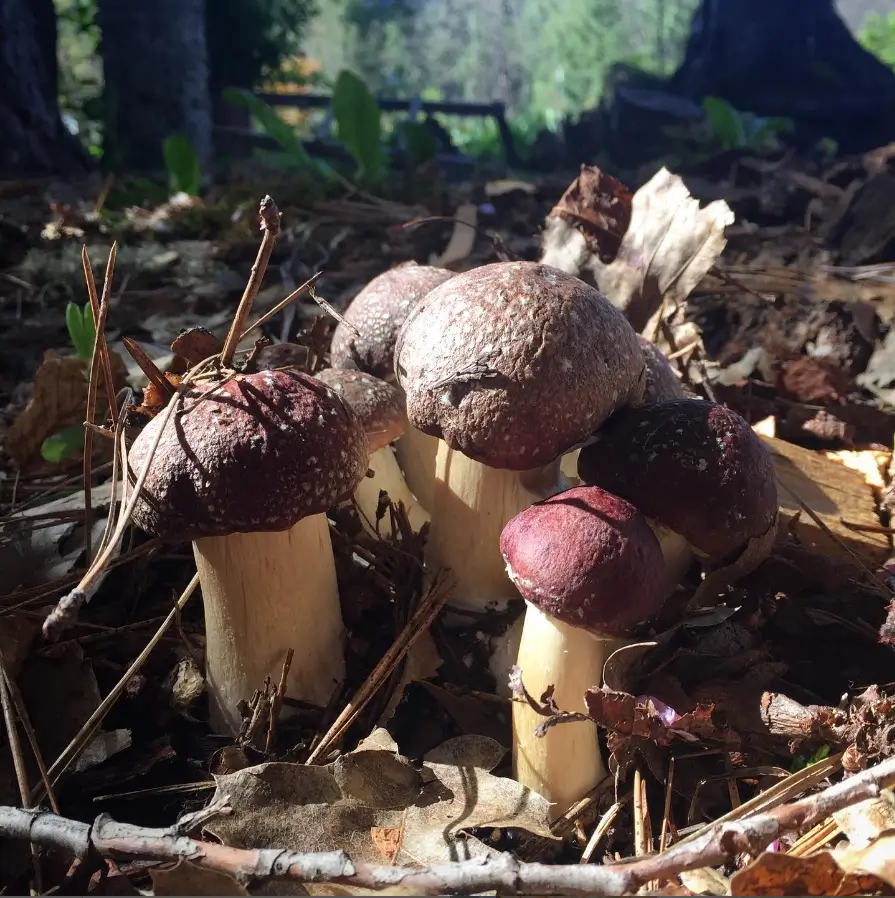
Stropharia rugoso-annulata, commonly known as the Wine Cap Mushroom or King Stropharia, is a robust and attractive edible mushroom that gardeners and mushroom cultivators appreciate for its ability to grow in mulch, wood chips, and straw. It is distinguished by its large, reddish-brown cap, white to cream gills, and stout stem, making it an impressive sight in both gardens and wild settings.
- Features a large, meaty cap that can range in color from wine red to reddish-brown, with a white to cream-colored ring around its stem, which is a remnant of the partial veil that once covered the gills of the developing mushroom.
- Known for its firm, savory flesh, the Wine Cap Mushroom offers a rich, earthy flavor that is often compared to potatoes or red meat, making it a versatile ingredient in a wide array of culinary dishes, from sautés and stews to grilled preparations.
- Contains valuable nutrients, including proteins, vitamins, and minerals, contributing to its appeal as a nutritious food source in addition to its culinary versatility.
- Cultivation is relatively straightforward, as Stropharia rugoso-annulata can be easily grown in outdoor settings by inoculating suitable substrates with spawn, making it accessible for both commercial growers and hobbyists interested in sustainable agriculture and mycology.
37. Tremella aurantialba
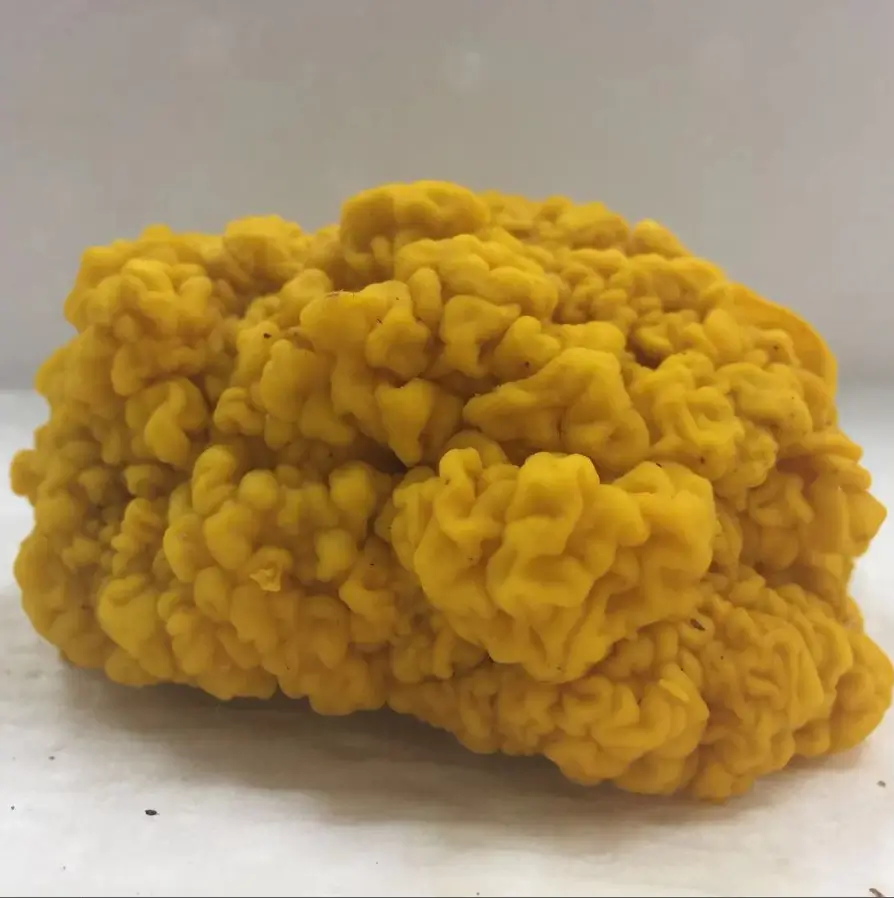
Tremella aurantialba, commonly known as the golden jelly fungus or yellow brain fungus, is a species of fungus belonging to the Tremellaceae family. It is prized for its unique texture, medicinal properties, and culinary versatility.
- T. aurantialba possesses a distinctive golden-orange, gelatinous fruiting body that resembles a brain or cauliflower.
- It typically grows on dead or decaying hardwood logs in forests worldwide.
- T. aurantialba has a mild, slightly sweet flavor and a crunchy texture.
- Studies suggest that T. aurantialba may help boost the immune system and protect against infections.
38. Tremella fuciformis – Snow Fungus or Silver Ear Mushroom

Tremella fuciformis, commonly known as Snow Fungus or Silver Ear Mushroom, is a species of jelly fungus that holds a place of esteem in traditional Chinese medicine and cuisine.
- This mushroom is characterized by its unique, gelatinous texture and white, almost translucent appearance, resembling a cluster of snowflakes or coral.
- Primarily grows on the dead branches of broadleaf trees in the warmer regions of Asia, including China, where it forms a parasitic relationship with other fungi, notably the Annulohypoxylon species, which it requires for nutrition.
- Rich in dietary fibers, essential minerals, and antioxidants, Tremella fuciformis is reputed to offer numerous health benefits, including hydration and improvement of skin elasticity, immune system support, and potential anti-inflammatory and antioxidant properties.
- In traditional medicine, it is believed to nourish the body, moisturize the skin, improve lung health, and enhance overall vitality, making it a sought-after ingredient in the preparation of health-promoting dishes and remedies.
39. Tricholoma giganteum
Tricholoma giganteum, known as the Giant Tricholoma or Giant Knight, is a species of mushroom that belongs to the Tricholoma genus. It is notable for its large size and robust structure, making it an impressive find in the wild. This mushroom typically grows in grassy areas near or in deciduous and coniferous forests, often forming symbiotic relationships with the roots of trees, which is essential for its growth and the nutrient exchange within the ecosystem.
- Characterized by a large, thick cap that can range in color from white to grey or light brown, with a smooth to slightly scaly surface, and a robust, white stem that is solid and meaty.
- The Giant Tricholoma is appreciated for its substantial flesh and mild, often nutty flavor, making it a desirable species for culinary use in dishes where mushrooms are a central ingredient, such as stews, sautés, and grilled preparations.
- Found in temperate regions, it emerges in the late summer to autumn, often in groups or rings in grassy areas adjacent to forests, benefiting from the nutrient-rich soil and the proximity to trees with which it forms mycorrhizal associations.
- While Tricholoma giganteum is edible and sought after by foragers, it’s important to exercise caution and proper identification when collecting wild mushrooms, as there are poisonous species with similar appearances.
40. Tricholoma lobayense
Tricholoma lobayense, a species within the Tricholoma genus, is less widely known and documented in the broader mycological and culinary communities compared to other members of its genus. Tricholoma species are known for their diverse habitats, often forming symbiotic mycorrhizal relationships with trees, which are crucial for nutrient exchange in forest ecosystems. While specific information on Tricholoma lobayense might be limited, general characteristics of Tricholoma mushrooms can provide insight into its potential ecology and uses.
41. Volvariella diplasia
Volvariella diplasia is a species of mushroom belonging to the genus Volvariella, which is known for its distinctive feature of having a volva or sac-like structure at the base of the stem, similar to some Amanita species but without the risk of toxicity associated with many Amanitas. This genus includes mushrooms that are commonly found in grassy areas, wood chips, or rich soil, often thriving in warmer climates.
- Typically grows in nutrient-rich, disturbed soils, which can include gardens, fields, and areas with decaying wood or compost, indicating its role in decomposing organic matter and contributing to soil health.
- Volvariella diplasia is characterized by a cap that can range from white to pale pink or gray, often with a smooth to slightly fibrillose texture. The presence of a volva at the base of its stem is a key identifying feature, distinguishing it from other mushroom species.
- This species, like other members of the Volvariella genus, is considered edible, but it’s essential to distinguish it from potentially toxic look-alikes, particularly some Amanita mushrooms, which also have a volva but can be highly poisonous.
- Cultivation of Volvariella diplasia is less common compared to some other edible mushrooms, but interest in its growth reflects a broader trend in exploring diverse and sustainable sources of food.
42. Volvariella esculenta – the Paddy Straw Mushroom
Volvariella esculenta, commonly known as the Paddy Straw Mushroom, is a highly esteemed edible mushroom, especially in Asian cuisines, for its delicate texture and flavor. It thrives in warm, humid climates and is frequently cultivated in regions where rice straw is abundant, as it grows well on this substrate.
- Grows optimally in warm, humid conditions, making it a common choice for cultivation in Southeast Asia, where these environmental conditions are prevalent.
- Typically cultivated on rice straw, which not only provides an ideal substrate for growth but also contributes to the recycling of agricultural waste, thereby promoting sustainable agricultural practices.
- Characterized by a smooth, white to light brown cap and a volva at the base, similar to other species in the Volvariella genus, distinguishing it from many other edible mushrooms.
- The cultivation process for Paddy Straw Mushrooms is relatively simple and cost-effective, allowing for small-scale and commercial production. This accessibility has led to its widespread use and appreciation in culinary traditions.
43. Volvariella volvacea – the Straw Mushroom
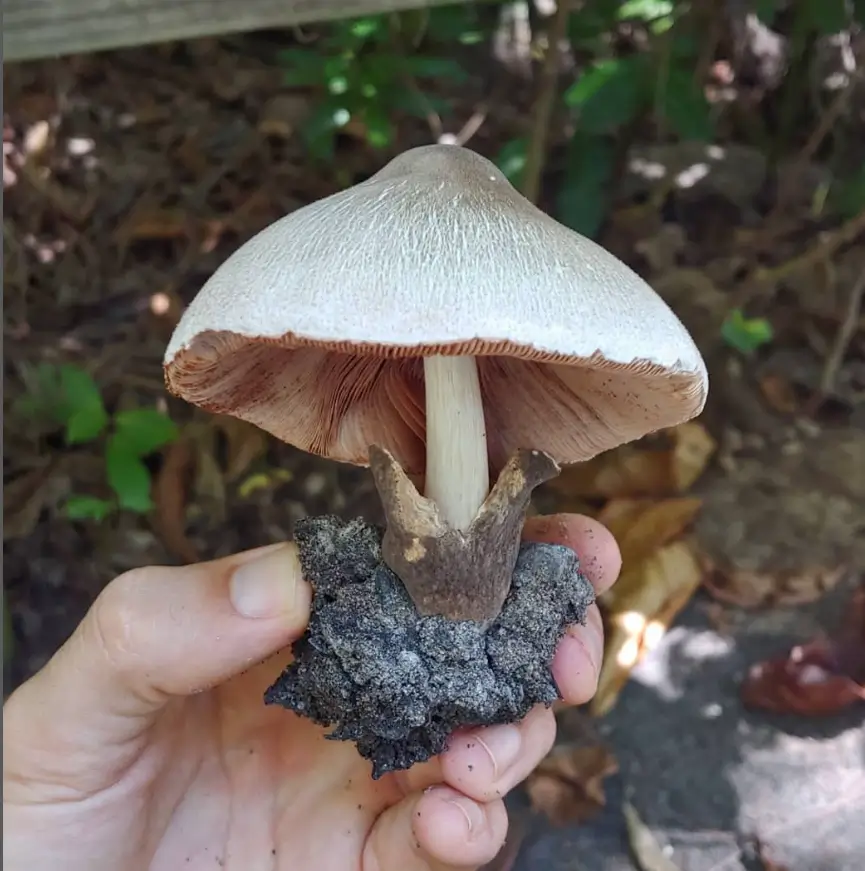
Volvariella volvacea, commonly known as the Straw Mushroom, is an edible mushroom, particularly in Asian cuisine. This mushroom thrives in warm, tropical climates and is typically cultivated on rice straw, hence its common name.
Volvariella volvacea’s popularity in culinary applications and its role in sustainable agriculture highlight its importance as a food source. Its ability to be cultivated on agricultural waste products not only promotes efficient resource use but also provides economic opportunities for farmers in tropical regions.

